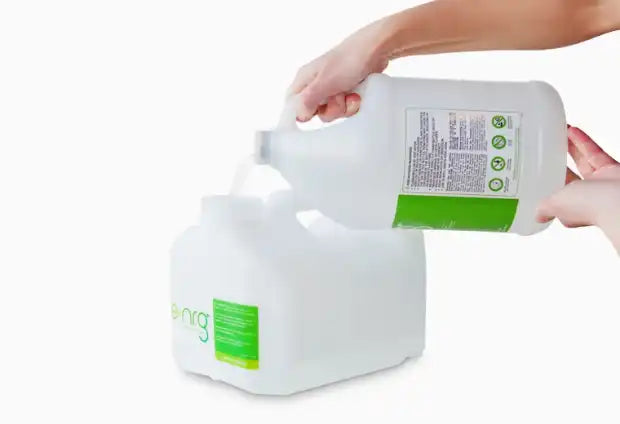Ethanol Fuel Safety Guide

Bioethanol fuel has been involved in numerous house fires in Australia, particularly those involving portable ethanol fireplaces (ACCC, 2017; Product Safety Australia, 2023). While exact percentages are not cited by the ACCC, state fire services and regulators have raised concerns due to injury and fire incidents. This makes safety rules critical for every bioethanol fireplace owner.
Denatured ethanol powers most indoor ethanol fireplaces and creates serious risks because it catches fire at just 12°C (53.6°F)—much lower than most liquids you keep at home (Safe Work Australia, 2020).
Ethanol fireplaces work different than propane or natural gas systems. Ethanol burns as a liquid fuel can produce a flame you can't see in daylight (Fire and Rescue NSW, 2016). This surprises new users and even people who've used these fireplaces before.
The fuel catches fire easily, vapours can build up, and there's not much government oversight for home use. You need to understand fire safety rules, how to store fuel properly, and what to do in emergencies.
This guide covers the basics you need to know. We'll talk about warning labels, air flow needs, cleaning up spills, and keeping kids safe. Follow these steps to keep your ethanol fireplace safe all year and protect your family and home from accidents that don't need to happen.

Fire Hazard Characteristics
Understanding Ethanol's Extreme Flammability
Bioethanol catches fire at 12°C (53.6°F), which makes it one of the most dangerous liquids people use at home (Safe Work Australia, 2020). This temperature is much higher than gasoline (−43°C) but still creates similar vapour problems when you don't handle it right.
The ethanol fuel for fireplaces is usually 95% alcohol, which creates vapour pressure that can collect in closed spaces (Safe Work Australia, 2020).
Critical Ignition Risks
Static electricity when you pour fuel is the biggest fire risk, especially when the air is dry or during winter when there's less humidity (Safe Work Australia, 2020). Unlike propane systems, ethanol makes flames you can't see in daylight, making it hard to tell if there's a fire in apartments or for first-time users (Fire and Rescue NSW, 2016).
Vapour weight matters a lot—ethanol vapours are heavier than air and sink to low spots where heat sources like pilot lights or electrical equipment can start fires (WorkSafe Victoria, 2019).
Fire safety experts say to keep at least 3 meters away from any heat source when you store and handle fuel (Metropolitan Fire Service SA, 2016).
Emergency response needs Class B fire extinguishers (foam, CO₂, or dry powder)—never use water, which spreads burning ethanol and makes fires worse (ACCC, 2017).

Proper Storage Protocols
Container Requirements and Material Compatibility
Safe ethanol fuel storage starts with picking the right containers made from materials that work with ethanol. Don't use aluminium containers at all—ethanol corrodes them and can cause leaks you won't notice (Safe Work Australia, 2020).
High-density polyethylene (HDPE) or stainless steel containers work best for backup protection when storing at home.
Tight seals are important, but containers need to handle pressure changes when temperatures change. Professional pouring equipment has pressure relief valves that stop dangerous pressure from building up in closed spaces (AS 1940–2017).
Environmental Storage Conditions
Keep storage temperatures under 25°C (77°F) to reduce vapour and make fuel last longer (Safe Work Australia, 2020). Humid storage breaks down containers faster, while cold weather needs protection from freeze-thaw cycles that damage seals.
Areas with good air flow stop vapour buildup—figure out minimum air flow rates based on how much you store. Basement storage needs fans; garage storage gets natural airflow but needs distance from heat sources (Metropolitan Fire Service SA, 2016).
GHS Labelling Compliance
Safety sheets require specific warning symbols on all containers. Warning labels must show flame and exclamation mark symbols, the word "DANGER," and safety gear recommendations (ACCC, 2017).
Store no more than 40 litres at home, following local fire rules and home insurance requirements. Regular fuel testing makes sure storage problems don't hurt how it burns or create safety issues (ACCC, 2017).

Safe Handling Procedures
Refuelling Best Practices
Safe ethanol fuel handling requires a the burner to can cool down to safe temperatures before refuelling (Fire and Rescue NSW, 2016).
Always use the refilling equipment and process advised by the manufacturer. Using an anti-static tool when refuelling can to prevent static electricity (Safe Work Australia, 2020).
Fill burners to never more than their intended volume—too much fuel creates pressure buildup and flow problems. Grounding steps are important when using pumps or larger pouring equipment in humid conditions where static electricity builds up (WorkSafe Victoria, 2019).
Personal Protection and Spill Response
Safety gear includes rubber gloves and safety glasses during all fuel handling. Ethanol removes oils from skin with repeated contact, which is especially bad for older people with sensitive skin (Safe Work Australia, 2020).
Spill cleanup needs immediate containment using materials made for dangerous liquids. Never use water-based cleaning—it spreads ethanol and makes more vapour (Fire and Rescue NSW, 2016).
Emergency steps require immediate air flow in affected areas and proper disposal of contaminated materials following hazmat rules. New users should practice refuelling with small amounts before handling larger volumes, reducing risk through hands-on safety training (Metropolitan Fire Service SA, 2016).

Indoor Air Quality & Ventilation
Combustion Chemistry and Byproducts
Complete burning of ethanol makes carbon dioxide and water vapour at known rates—about 1.4 kg CO₂ per litre burned. But incomplete burning in spaces with poor air flow creates carbon monoxide, which is dangerous for apartment residents and users in small rooms (ACCC, 2017).
Blue flames shows incomplete burning, while yellow flames means a more complete burn. (Metropolitan Fire Service SA, 2016).
Heat output calculations help figure out room size needs—usually 10 cubic feet per 1,000 BTU minimum; measuring your room size will determine the best ethanol fireplace for you.
Ventilation Requirements and Air Quality Management
Well-ventilated areas need air changes of 0.5–1.0 per hour during ethanol burning (Fire and Rescue NSW, 2016). Natural air flow through windows might work for living room setups, but closed spaces need fan systems.
Carbon monoxide detectors give important early warnings for incomplete burning. Indoor air monitoring should include oxygen levels—amounts below 19.5% show dangerous oxygen use (Fire and Rescue NSW, 2016).
Winter fireplace use creates unique problems because cold weather limits natural airflow. HVAC experts recommend extra ventilation during holiday use when homes stay sealed against temperature changes (Metropolitan Fire Service SA, 2016).
Smoke detectors work with CO monitoring for complete indoor air protection.

Health & Exposure Risks
Direct Contact Hazards
Denatured ethanol creates serious risks through skin contact and breathing vapours. Fireplace fuel contains methanol and bitter chemicals that cause severe poisoning if swallowed—especially dangerous for homes with children (Royal Children's Hospital Melbourne, 2020).
Skin contact causes drying effects, leading to dryness, cracking, and skin problems with repeated contact. Eye contact causes severe irritation that needs immediate emergency response with continuous water flushing for at least 15 minutes.
Inhalation and Systemic Effects
Breathing vapours at levels above 1,000 ppm causes headaches, dizziness, and breathing irritation. Long-term exposure in poorly ventilated spaces may affect brain function, especially concerning for older people with health problems (Safe Work Australia, 2020).
Medical emergencies require poison control contact (13 11 26 in Australia) for any swallowing incidents. First aid includes removing contaminated clothing and getting professional medical help for symptoms that continue after initial treatment (Royal Children's Hospital Melbourne, 2020).
Safety sheets recommend immediate ventilation and fresh air for breathing cases, with emergency service contact if breathing problems develop.

Child & Pet Safety Measures
Physical Barriers and Access Control
Child safety requires glass guards and burner covers that prevent direct contact with flames and hot surfaces. Remote lighting systems eliminate need for children to get close to active burners during lighting (ACCC, 2017).
Cool-down time lasts 30+ minutes after flames go out—metal parts stay dangerously hot. Pet owner needs include high installations that prevent curious animals from reaching fuel containers or pouring equipment (Metropolitan Fire Service SA, 2016).
Behavioural Precautions
Invisible flames during daylight create burn risks for both children and pets who can't detect active burning. Emergency shut-off controls and automatic safety features provide important risk reduction (ACCC, 2017).
New users should set up safety areas around ethanol fireplaces, teaching children about flame visibility problems and surface temperature dangers. Safety training includes recognising emergency steps and poison control contact information for accidental swallowing incidents involving denatured ethanol (Royal Children's Hospital Melbourne, 2020).

Conclusion & Compliance
Local fire rules and building codes vary a lot—talk to fire safety inspectors before installation. Good safety habits prevent accidents through proper risk checking and prevention steps.
When fuel testing shows contamination or ventilation problems appear, get licensed professionals immediately. Code compliance protects both property and insurance coverage.
References
-
ACCC. (2017). Decorative alcohol fuelled devices safety standard. Australian Competition and Consumer Commission.
-
Product Safety Australia. (2023). Ethanol fuel fire risks. Australian Government.
-
Fire and Rescue NSW. (2016). Ethanol burner safety bulletin. NSW Government.
-
Metropolitan Fire Service SA. (2016). Safe use of ethanol burners. South Australia Fire Service.
-
Safe Work Australia. (2020). Managing risks of hazardous chemicals in the workplace - ethanol. Australian Government.
-
AS 1940–2017. The storage and handling of flammable and combustible liquids. Standards Australia.
-
WorkSafe Victoria. (2019). Static electricity and flammable liquids. State Government of Victoria.
-
Royal Children's Hospital Melbourne. (2020). Alcohol poisoning in children: Clinical fact sheet.



Leave a comment